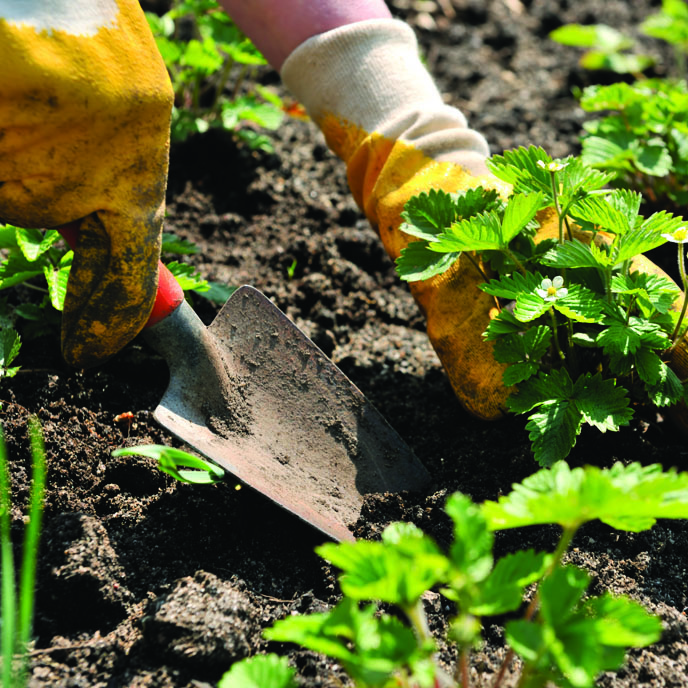Recognizing the Different Kinds of Gardening and Just How They Add to a Much Healthier Lifestyle and Atmosphere

Benefits of Vegetable Horticulture
Numerous individuals are significantly identifying the myriad benefits of vegetable horticulture as an essential component of a much healthier way of life. Participating in veggie gardening provides numerous physical wellness benefits, consisting of increased exercise, which enhances cardio wellness and promotes overall health and fitness. The act of planting, weeding, and harvesting requires movement and can aid battle sedentary behaviors, adding to weight monitoring and improved muscular tissue tone.
Furthermore, cultivating one's very own vegetables dramatically improves dietary top quality. Domestic fruit and vegetables is commonly fresher and much more nutrient-dense compared to store-bought options, as it can be consumed shortly after harvest. This accessibility urges a greater intake of vegetables and fruits, which are crucial for preventing persistent diseases.
Furthermore, veggie horticulture cultivates psychological wellness by offering a healing outlet for stress relief and relaxation. Jointly, these benefits underscore the importance of vegetable horticulture as a keystone of a healthier way of life.
Exploring Blossom Gardening
:max_bytes(150000):strip_icc()/garden-glossary-potting-getty-0623-ecf762deed2a43bca2a90183cb03da31.jpg)
Along with visual advantages, blossom horticulture sustains neighborhood communities. Lots of blooming plants attract pollinators, such as bees and butterflies, which are critical for maintaining biodiversity. The presence of diverse plants can additionally boost soil health and wellness, as different plants add to nutrition biking and enhance dirt structure.
Additionally, blossoms can play a significant function in promoting lasting practices. Lots of gardeners opt for native or drought-resistant types, which need less water and marginal chemical inputs. This method not just benefits the environment however additionally urges responsible horticulture habits.
Ultimately, blossom horticulture serves as an important part of an alternative horticulture approach. Gardening. By growing beauty and sustaining local ecological communities, it integrates with veggie horticulture and emphasizes the significance of nurturing both our physical and mental health via nature
Container Gardening Benefits
Container gardening deals many advantages that make it an appealing alternative for both amateur and experienced gardeners. One of the key advantages is its versatility; containers can be positioned on patios, porches, or perhaps inside your home, permitting gardening in areas with limited ground accessibility. This versatility enables people in urban atmospheres or those with small yards to grow plants efficiently.
In addition, container horticulture gives boosted control over soil quality and moisture levels. Gardeners can select details dirt blends to optimize plant health and alleviate problems like weeds and bugs. The wheelchair of check out this site containers additionally enables simple relocation to make the most of sunshine direct exposure or shield plants from stormy climate.
In addition, container yards can be cosmetically pleasing, offering an opportunity for creative thinking in design. Gardening. They can act as decorative elements that enhance exterior or indoor spaces while advertising biodiversity by drawing in pollinators
Last but not least, container horticulture can add to a much healthier lifestyle by urging exercise, as it usually entails lifting, planting, and preserving plants. Overall, the advantages of container horticulture make it an accessible and rewarding technique for those looking for to improve their way of life and environment.
The Surge of Upright Gardening
As metropolitan spaces become progressively crowded, the pattern of vertical gardening has taken off, permitting people to optimize their horticulture potential in restricted locations. This cutting-edge approach entails expanding plants in upright structures, such as wall-mounted planters, trellises, or specialized vertical yard systems. The charm of vertical horticulture lies not just in its efficient use room however also in its visual contribution to metropolitan environments, changing bare walls into lavish green landscapes.
Upright gardens can be set up in homes, terraces, and neighborhood rooms, giving a system for growing a variety of plants, consisting of natural herbs, veggies, and decorative blossoms. This method urges biodiversity and can improve air top quality by filtering system pollutants while promoting a connection to nature in densely populated locations. Furthermore, upright horticulture supplies functional advantages, such as enhanced yield per square foot, making it an attractive alternative for city garden enthusiasts seeking to expand their very own food.

Lasting Practices in Horticulture
Accepting sustainable practices in gardening is essential for promoting environmental health and wellness and guaranteeing the practicality of our natural deposits. Sustainable horticulture methods concentrate on lowering ecological influence, saving water, and fostering biodiversity. By carrying out techniques such as organic horticulture, garden enthusiasts can decrease the usage of artificial fertilizers and pesticides, which can damage regional environments.
Companion growing is another reliable sustainable method, where certain plants are expanded with each other to boost development and discourage insects normally. In addition, utilizing native plants in landscaping sustains regional wild animals and requires less maintenance, as they are naturally adapted to the local environment and soil problems.
Water preservation techniques, such as rainwater harvesting and drip watering, help to efficiently manage water sources, hence minimizing waste. Furthermore, composting natural waste not just improves the soil however likewise lowers landfill contributions, promoting a round economic climate.
Finally, exercising plant turning and cover cropping enhances dirt health and wellness and lowers the risk of parasite invasions. By incorporating these lasting practices, garden enthusiasts can develop durable communities that add to a healthier way of life while protecting the atmosphere for future generations.
Final Thought

In final thought, the varied methods of gardening, including veggie, flower, container, and upright gardening, jointly promote a healthier way of life and improve ecological sustainability. Each kind provides distinct look here benefits, from providing fresh produce and attracting pollinators to enhancing limited areas and encouraging biodiversity. By fostering lasting methods, these gardening approaches not just add to private wellness but also sustain more comprehensive environmental preservation efforts, eventually reducing reliance on industrial agriculture and improving area resilience.